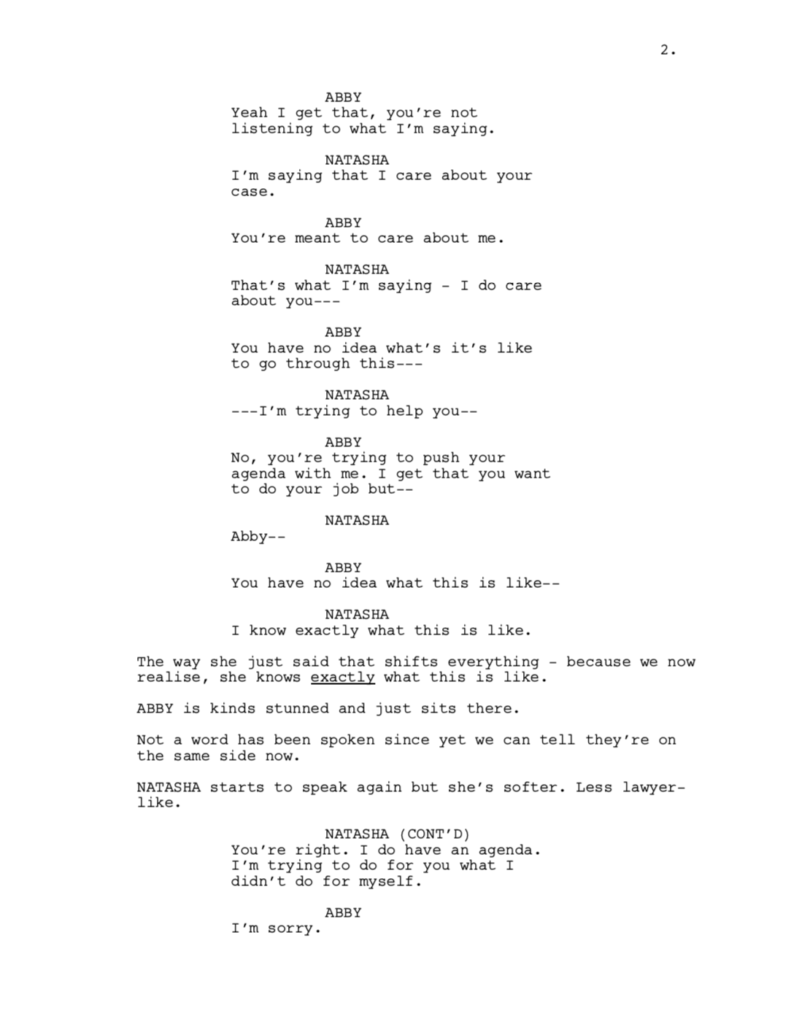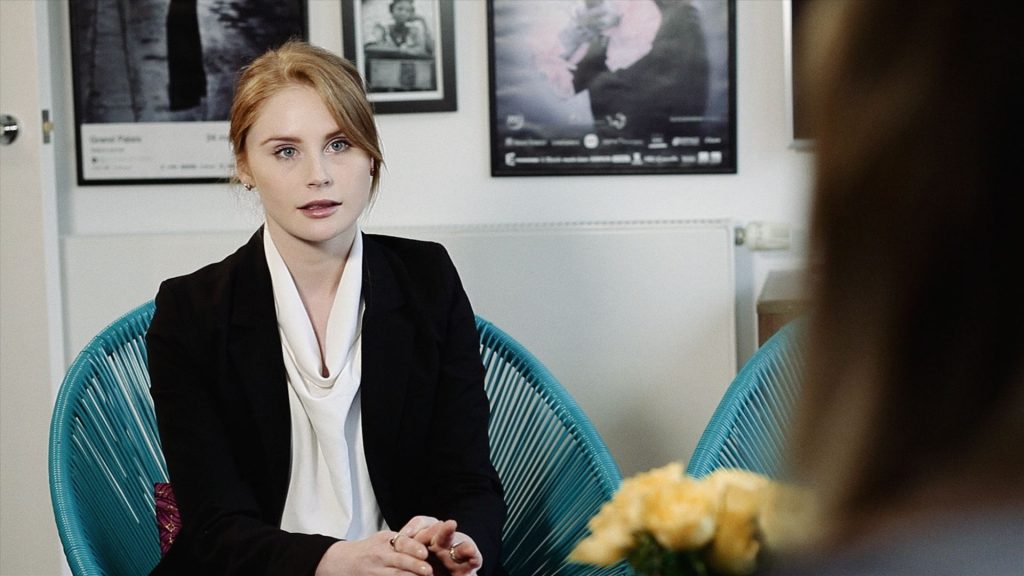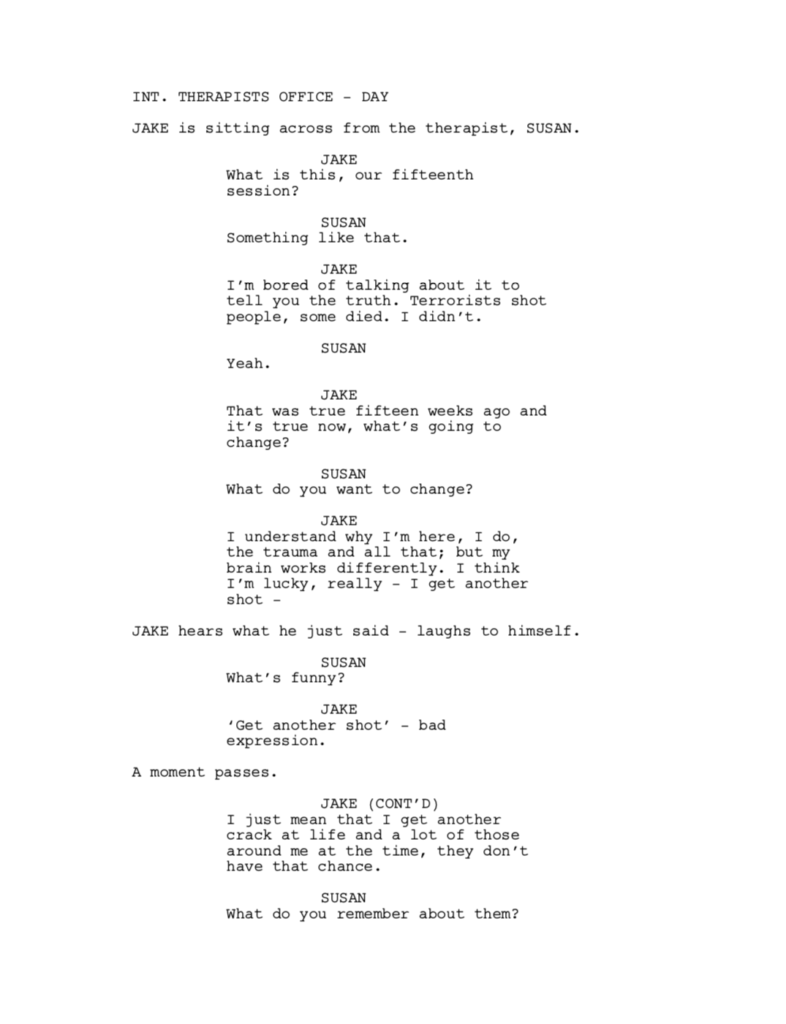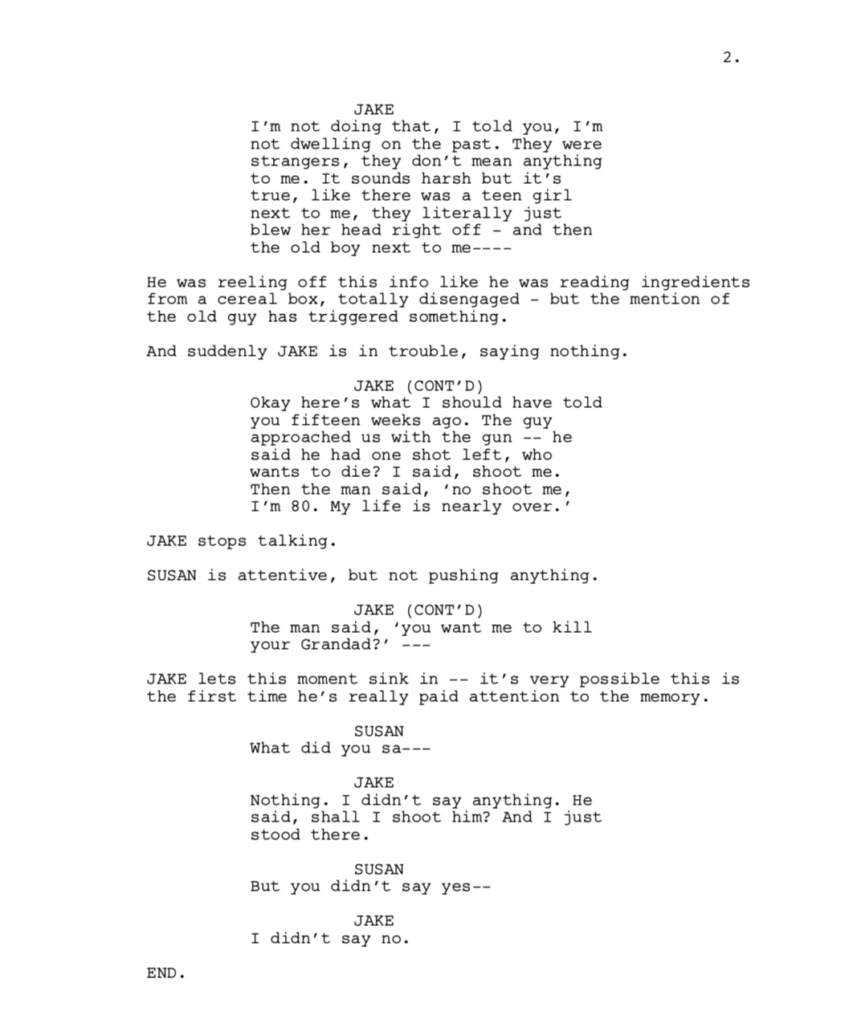Having a good script for your showreel scene is absolutely crucial. What you are doing, of course, is making something that feels like it’s a scene from a TV show or movie, but there are ways in which they are different.

That’s why when an actor plucks a random scene out of their favourite TV show and tries to replicate it on their reel, it rarely works. A TV show spends a whole episode telling a story — a whole season developing an arc. With a showreel scene, you need to achieve that in two pages.
But therein lies the challenge. Jamming exposition into a showreel script is deadly, and can absolutely ruin the scene.
It’s crucial that your characters don’t waste time explaining what’s happening to the audience. You want to begin running, diving straight into the drama.
Here’s a showreel script about two sisters.
The important thing in this scene, as with all showreel scenes, is simplicity of approach. They don’t need to be a complex web of narratives. A scene is at it’s strongest when one character wants something, and the other one opposes it.
“What I need before I can do anything is an intention and obstacle. Somebody wants something. Something’s standing in their way of getting it.”
-Aaron Sorkin
We know straight away what is happening. Alice asks when Rebecca is ‘driving up there’. Rebecca responds and asks if the sister will join, and the response she gets is “work”.
Already we have lots of information. We know this trip has some importance, and we find out important information about Alice when she responds with “Work.”
She didn’t say, “I’m on the rota at work so I can’t,” and she didn’t say “I’m meant to be working but I’ll get out of it,” she merely said “work.” We learn a lot about Alice from how she talks.
In a showreel script, every word is crucial. If you don’t have a sense of character in the opening few lines, then the script isn’t well written, and it isn’t going to serve the actor.
Within half a page, we know someone important to them is dying. And we know Alice is absolutely resistant to being involved.
It’s not until two thirds of the way down the page that we find out they’re talking about their mother, but we find out in a way that’s organic to the story. The conflict is already under way, and we find out through the characters in a way that feels natural and honest.
But the important thing is that they’re still in conflict.
Earlier on I wrote about arcs but in this script, there isn’t one. The character of Alice remains unchanged, absolutely determined to not see her Mum. This is a fascinating character! She won’t let us know her, and it makes her engaging.
Here’s another script. And in this one, we see a character change.



Here, again, we have two women who are in conflict. At first glance, the lawyer character just seems like a ‘lawyer’ – a stereotype. Someone pushing hard to get what she wants.

But what we discover is that she’s driven by a very personal need, and the reveal transforms the scene, and the relationship of the characters.
ABBY: You have no idea what this is like.
NATASHA: I know exactly what this is like.
Those two lines are all it takes. Suddenly these two women who were on opposite sides have understanding. The weight of the scene shifts.
The enemy is now something outside of the scene, it is the men who have hurt them. We have an ending, we have a resolution. And most importantly for the showreel scene, we have characters who have been through a journey, we’ve seen more of who they are — they’ve changed.
In a showreel you have a very limited time to impact the viewer. Current industry trends suggest your reel shouldn’t exceed three minutes. Many would say: two minutes. That’s why a character changing in a scene, having a big reveal, can be so powerful. Because in essence, you’re seeing two casting types in one scene.
I often approach it by writing either:
a) A strong character — who shows vulnerability.
Or:
b) A Vulnerable character — who shows strength.
What we saw in the previous scene is a strong character, a lawyer, who finally shows her humanity, her vulnerability, and it makes her a more complete character, more relatable to the audience.
Scenes get stronger when the characters reveal themselves. In the lawyer scene, the woman had a secret. In the following scene, Jake is less self-aware. He’s traumatised, he’s in pain. He doesn’t know what’s wrong until it is revealed.
He begins the scene defensively, but also a little cocky. He doesn’t think much of therapy, and he’s bored of it.
Also – the handling of the exposition, the why he’s in therapy, is done succinctly. He says “Terrorists shot people, some died. I didn’t.” We know everything we need to know.
What’s revealed is his guilt, his shame. He feels he could’ve helped someone survive, and he didn’t. Now he has to live with it.
When your character changes, the audience will respond.
The showreel from scratch is a very niche thing. Your target audience is a handful of casting directors and agents. It’s crucial to always keep in mind what they’re looking for.
Yes, of course, they are often looking at casting types and you need to brand yourself in the right way blah blah blah. But more importantly than that, they’re looking for good actors. They’re looking for people who can play characters believably. They’re looking to see how you handle the journey, a character going through a situation. A character who changes.
“Simplicity of approach is always best.”
-Charlie Chaplin.
The scripts on this page are for reference and for study but please do NOT steal them! However if you are interested in my screenwriting or other services please do drop me an email: dj@danieljohnsonfilms.co.uk
Further reading:
11 Tips for Creating a Memorable Showreel
The Complete Guide to Acting Showreels
Further Viewing:
Me talking about Showreels from Scratch.



















